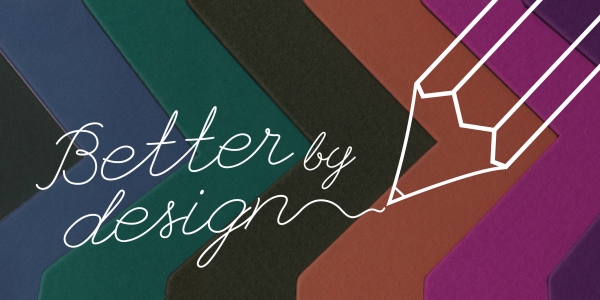Better by design

Web design is the first frontier of web development. How a site looks, whether or not it appeals to visitors and draws them in, is vital to the success of the sale of any product or service promoted on that site. If the design effectively engages the visitor then that’s everything…
…And yet web design is now often overlooked. The aesthetics of the design no longer hold the same value to many due to all the constraints that need to be addressed; it’s become a box to be ticked as we barrel through the stages of development to see what extras are necessary to make a site compatible with mobile and primed for optimisation. It’s all about selling more yet, in our rush, we often forget that the website is, in fact, our shop front.
The website is the first and most powerful bastion of a brand. Your potential customer has either actively searched for you or come across you thanks to your canny investment in SEO, PPC, Google Plus, rich content, banner advertising etc. So now they’ve arrived at your digital door you have a chance to make a proper, first impression. This is the important bit, right?
Not for a lot of us. As we progress through the digital age at break-neck speed, we are shifting our focus from the simple visuals and the key messages that are driven through good design, even though it is that design and creative work which helps to define us and position our brand.
The digital times are constantly changing and more and more components keep getting added to the mix. The art of development itself sits in the technical domain with proficient developers working to out-do themselves with the bells and whistles that can be added to turbo-charge a site.
And so we’ve become partially blinded by what we can achieve with the various bits of software and kit and it now seems to be all about what the website can do rather than how it looks. The aesthetics are being overlooked because of limitations set by mobile and the desire to concentrate on functionality and content.

Taking mobile first: responsive design is often cited as the cause of many an impediment when it comes to creativity. Because of the nature of its use – quick, immediate and on the move – detailed design elements and layouts are not really appropriate and are often sacrificed for basic, standard block designs. The need for an immediate communication of key messages trumps the visual appeal to some extent.
Functionality and content are up there too when it comes to key components in the mix as we are rightly concerned with the visitor’s journey through the website, what will inform him or her and what will make them buy.
This does not negate the need for good design, however. None of these components should limit our creativity and be served as excuses for average design. We should be able to apply creative thought that encompasses all platforms, big and small, to make a website look good and draw the visitor in, applying further rules of engagement for ease of navigation and usability.
An eye-catching, well designed website ultimately looks far more professional than one that has been driven solely by the requirements of its technology. Selling may be your game but you still need to stand out to truly impress.
Consider mobile requirements, functionality and content, by all means, but don’t limit your vision. Don’t overlook the art of the design.
